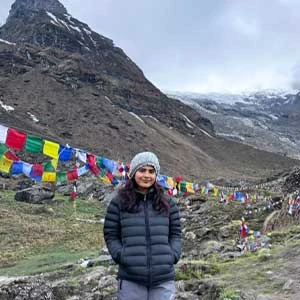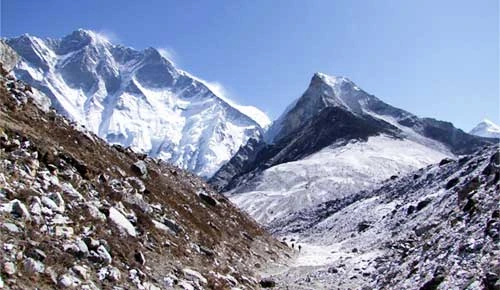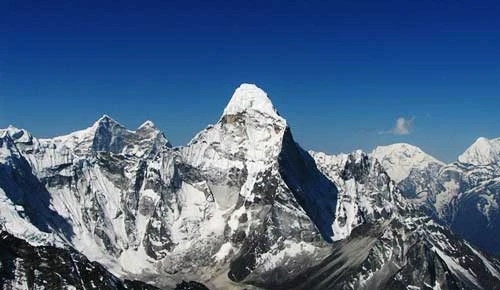How to Prepare for the Manaslu Circuit Trek?
Trekking the Manaslu Circuit is an adventure like no other, offering stunning Himalayan landscapes, traditional villages, and the thrill of high-altitude trekking. But preparing for the Manaslu trek can feel overwhelming, especially for first-time trekkers. From navigating rugged trails to managing altitude challenges, there’s a lot to think about before you start your journey. Without proper preparation, even experienced trekkers can struggle with exhaustion or altitude sickness, which can take away from the beauty and joy of the trek.
The key to a successful Manaslu lies in planning ahead. Focusing on fitness, acclimatization, and the right gear can make all the difference. Knowing what to pack, understanding the permit requirements, and following simple preparation tips will help you enjoy every step of this incredible trek safely and confidently. With the right approach, the trek becomes not just a challenge but an unforgettable adventure through one of Nepal’s most scenic regions.
Understanding the Manaslu Trek
The Manaslu Trek is a truly unforgettable adventure, taking you through some of Nepal’s most stunning and untouched landscapes. Circling around Mount Manaslu, the world’s eighth-highest peak, the trek spans roughly 177 km and usually takes 14–18 days. Along the way, you’ll pass through lush forests, peaceful river valleys, alpine meadows, and dramatic mountain ridges, each offering its own kind of beauty. For those interested in exploring a more remote and culturally rich area, the Manaslu Tsum Valley Trekking offers a unique experience deep into the Tsum Valley, with traditional villages and Tibetan-influenced monasteries.
What makes this trek so special is the combination of natural wonders and local culture. Remote villages along the trail showcase Tibetan-style architecture, ancient monasteries, and the warm hospitality of Gurung and Tibetan communities. The trek’s highlight, Larkya La Pass at 5,160 meters, rewards every step of effort with breathtaking panoramic views of Manaslu, Himlung, Ngadi, and the surrounding peaks. Challenging yet deeply rewarding, the Manaslu Circuit Trek is perfect for anyone looking to experience the Himalayas in their most pristine and authentic form.
Table of Contents
Major Attractions of the Manaslu Trek
Traditional Himalayan Villages:
The Manaslu Circuit Trek passes through remote villages like Samagaon, Sama, and Deng, where Tibetan-influenced architecture and ancient monasteries dominate the landscape. These villages provide trekkers with an authentic cultural experience, allowing them to interact with local Gurung and Tibetan communities. Observing daily life, tasting traditional cuisine, and witnessing unique festivals give a deep insight into the heritage and lifestyle of people living in this remote Himalayan region.
Lush Forests and Flora:
The trek winds through dense rhododendron, bamboo, and pine forests, creating serene and shaded walking paths. In spring, the forests are ablaze with colorful rhododendron blooms, while autumn transforms the canopy into golden hues. These forests not only enhance the trek’s natural beauty but also offer opportunities to spot native Himalayan wildlife and birds, providing both a peaceful and immersive trekking experience.
Rivers and Waterfalls:
Along the trail, trekkers encounter crystal-clear rivers and cascading waterfalls, which add charm and tranquility to the journey. These natural water features serve as perfect resting spots to refresh and recharge. The flowing streams also create scenic locations ideal for photography and quiet moments, giving trekkers a chance to connect with nature amidst the challenging terrain.
Larkya La Pass (5,160 m):
The trek’s most iconic highlight is Larkya La Pass, the highest point of the circuit. Crossing this pass offers breathtaking panoramic views of Mount Manaslu, Himlung, Ngadi, and surrounding peaks. The high-altitude pass presents a challenging climb but rewards trekkers with dramatic glaciers, snow-capped ridges, and a sense of accomplishment that makes the effort worthwhile.
Monasteries and Spiritual Landmarks:
Scattered along the route are small monasteries, prayer flags, and stupas, reflecting the region’s spiritual and religious culture. These landmarks provide trekkers a chance to pause, meditate, or simply enjoy the peaceful ambiance. The spiritual aura adds a unique layer to the trek, making it more than just a physical journey and offering a deeper appreciation of Himalayan traditions.
Glacial Landscapes and Alpine Meadows:
As the trek reaches higher altitudes, trekkers traverse glacial valleys and alpine meadows. These landscapes are often dotted with wildflowers during the warmer months and provide sweeping views of rugged, untouched terrain. The dramatic scenery changes with the seasons, offering trekkers an ever-evolving backdrop of natural beauty and making the trek an unforgettable adventure.
Physical Fitness and Training
Preparing your body for the Manaslu Circuit Trek is just as important as planning your gear or route. This trek is moderately to highly challenging, with long days of walking and steep ascents, and high-altitude conditions, so a solid fitness foundation can make the experience more enjoyable and safe. Trekking at elevations above 5,000 meters places extra demands on your heart, lungs, and muscles, and without proper preparation, even short uphill sections can feel exhausting. Building endurance, strength, and flexibility before you set foot on the trail helps reduce fatigue and lowers the risk of injuries. For trekkers who prefer a more comfortable journey while still experiencing the full circuit, the Manaslu Circuit Luxury Trek provides upgraded accommodations and services without compromising the challenge and adventure of the route.
Here are the key things you should know before, during, and after the trek to build endurance, stay healthy on the trail, and recover properly once your adventure is over.
Before the Trek
- Build endurance and strength: Focus on improving overall stamina through long hikes with a loaded backpack, jogging, stair climbing, or cycling.
- Strengthen key muscles: Incorporate core and leg workouts such as squats, lunges, and planks to handle steep climbs and uneven trails.
- Simulate trekking conditions: Walk on varied terrain and gradually increase your trekking distance and weight over several weeks.
- Prevent fatigue and injury: A well-prepared body adapts better to high-altitude demands and reduces the risk of strain or exhaustion.
During the Trek
- Pace yourself: Walk steadily, listen to your body, and take regular breaks to avoid overexertion.
- Stay hydrated and nourished: Drink plenty of water and eat energy-rich meals to maintain strength throughout the day.
- Stretch regularly: Gentle morning or evening stretches help keep muscles flexible and prevent stiffness.
- Maintain good posture: Proper walking form reduces pressure on your knees, back, and shoulders during long hours of trekking.
After the Trek
- Allow proper rest: Take a few days to relax and let your muscles recover naturally.
- Do light exercises: Engage in light stretching or yoga to ease muscle tension and promote recovery.
- Replenish energy: Eat balanced meals and stay hydrated to rebuild energy reserves.
- Stay fit for future treks: Recovery prepares your body for upcoming adventures, keeping you strong and ready for the next Himalayan journey.
Acclimatization and Altitude Tips for the Manaslu Trek
Trekking the Manaslu Circuit means spending several days at high altitudes, with the trek reaching over 5,000 meters at Larkya La Pass. Proper acclimatization is crucial to prevent altitude sickness, stay healthy, and fully enjoy the journey. Altitude sickness occurs when your body struggles to adjust to lower oxygen levels, leading to symptoms like headaches, nausea, dizziness, fatigue, and difficulty sleeping. In severe cases, it can be life-threatening, so understanding how to adapt is essential.
Common Altitude-Related Illnesses:
- Acute Mountain Sickness (AMS): Mild symptoms include headache, nausea, fatigue, dizziness, and difficulty sleeping. Often occurs above 2,500–3,000 meters.
- High-Altitude Pulmonary Edema (HAPE): Fluid accumulation in the lungs. Symptoms include shortness of breath even at rest, cough, weakness, and rapid heartbeat. Can be life-threatening.
- High-Altitude Cerebral Edema (HACE): Swelling of the brain due to altitude. Symptoms include severe headache, confusion, loss of coordination, hallucinations, and lethargy. This is a medical emergency.
Altitude Tips
High altitude on the Manaslu Circuit Trek can be challenging, so it’s important to take precautions to stay safe and enjoy the journey. Following the right practices can help your body adjust, prevent altitude sickness, and make the trek more comfortable. Here are the essential tips you need to follow:
- Acclimatize gradually with rest days and follow the “climb high, sleep low” principle.
- Stay well-hydrated throughout the trek.
- Eat light, nutritious, and carbohydrate-rich meals to maintain energy.
- Monitor your body for symptoms of altitude sickness like headache, nausea, or dizziness.
- Descend immediately if severe symptoms of HACE or HAPE occur.
- Follow the guidance and pacing advice of your trek guide.
- Get adequate rest and sleep to support acclimatization.
- Avoid overexertion and maintain a moderate trekking pace on steep sections.
Manaslu Trek: Health & Safety Precautions
Proper preparation is essential to stay safe and healthy on the Manaslu Circuit Trek. Before setting out, it’s important to consult a doctor and get recommended vaccinations, such as Hepatitis A, Typhoid, and Tetanus. Being medically prepared helps prevent common illnesses, especially in remote areas where healthcare access is limited. Carrying essential medications, including those for altitude sickness, digestive issues, and pain relief, is also highly recommended.
Hiring a knowledgeable local guide greatly enhances safety on the trail. Guides help navigate tricky terrain, monitor your pace, and watch for signs of altitude sickness like headaches, nausea, or dizziness. They can also assist in emergencies, advise on acclimatization strategies, and ensure that your trek stays on schedule while prioritizing health and safety.
Practical measures on the trail are equally important. Carry a well-stocked first-aid kit, drink purified water, eat safe and nutritious food, and maintain good hygiene. Pacing yourself, taking regular rest breaks, and avoiding overexertion further reduce the risk of illness or injury. By combining medical precautions, expert guidance, and smart habits, you can fully enjoy the stunning landscapes, cultural experiences, and adventure of the Manaslu Circuit Trek with confidence.
Mental Preparation & Mindset
Trekking at high altitudes is as much a mental challenge as a physical one. Long days on rugged trails, changing weather, and remote locations can test patience, focus, and resilience. Preparing mentally helps you stay positive, manage stress, and overcome unexpected challenges along the way. Setting realistic expectations is key. Accept that some days will be harder than others, and progress may be slower at higher elevations. Maintaining a calm and flexible mindset allows you to adapt to sudden weather changes, difficult terrain, or minor setbacks without losing motivation. Here’s what you should consider to strengthen your mindset before and during the trek.
- Visualize yourself completing difficult sections and reaching key viewpoints.
- Break the trek into smaller goals and celebrate each achievement.
- Practice mindfulness or meditation to stay focused and reduce stress.
- Use breathing exercises to stay calm during challenging climbs or high-altitude stretches.
- Keep a positive attitude and remind yourself why you started the journey.
- Stay flexible with daily plans to handle unexpected changes smoothly.
- Engage with fellow trekkers or guides to stay motivated and encouraged.
- Maintain mental energy by balancing effort with adequate rest and nutrition.
- Focus on the experience rather than rushing to the next milestone.
- Use journaling or photography to capture moments and reflect on progress.
Gear and Packing Essentials for Manaslu Trek
The gear you pack can make a big difference in comfort, safety, and enjoyment on the Manaslu trek. Some parts of the trail have teahouses, while other sections may require camping, so your equipment and backpack size will depend on whether you hire porters. If porters are carrying your main load, a small daypack for water, snacks, a camera, and rain gear is enough. Without porters, you’ll need a larger pack to hold personal items, sleeping gear, and extra clothing. While some items can be purchased locally, it’s best to bring critical trekking gear from home to ensure quality and reliability.
For a successful trek, having the right gear and packing smartly is essential. From layered clothing and sturdy boots to essential accessories like trekking poles, water bottles, and a reliable backpack, the right equipment keeps you safe and comfortable on the trail. To make packing easier and ensure you don’t miss any essentials, check out our full guide on Packing Essentials for the Manaslu Trek, where we break down everything you need.
Permits for the Manaslu Circuit Trekking
When preparing for the Manaslu trek, obtaining the right permits is essential for a safe and legal journey. Trekkers must secure a Manaslu Restricted Area Permit (RAP), which regulates access to the region and helps preserve the environment and local culture. A Trekkers’ Information Management System (TIMS) card is also required, ensuring your safety is monitored while on the trail.
If your route passes through protected zones, a Manaslu Conservation Area Permit may be required. All permits can be conveniently arranged in advance through Nepal Trek Adventures, which can also provide experienced guides for the region. Make sure to carry your passport with a valid visa, along with copies of all permits, as authorities may check at various checkpoints along the trek.
Securing these permits ahead of time is a crucial step in Manaslu trek preparation, allowing you to focus fully on the stunning landscapes, local culture, and high-altitude adventure without interruptions.
Nutrition and Hydration Tips for the Manaslu Circuit Trek
Proper nutrition and hydration are essential for staying energized and healthy during high-altitude trekking. Your body burns more calories at altitude, so eating the right foods and drinking enough fluids can prevent fatigue, headaches, and altitude sickness.
Hydration: Drink plenty of water throughout the day, at least 3–4 liters, to stay properly hydrated. Dehydration can worsen the effects of altitude, so sip water regularly rather than waiting until you feel thirsty. Electrolyte tablets or powders can help replace salts lost through sweat, especially during long trekking days.
Nutrition: Focus on a balanced diet with carbohydrates for energy, proteins for muscle repair, and healthy fats for sustained energy. Simple snacks like nuts, energy bars, and dried fruits are great for quick energy boosts on the trail. At teahouses, opt for locally prepared meals like rice, lentils, noodles, and soups, which provide both nutrition and warmth.
Tips:
- Eat smaller meals more frequently to maintain energy levels.
- Avoid excessive alcohol or caffeine, which can dehydrate the body.
- Include fruits and vegetables whenever possible for vitamins and minerals.
- Listen to your body—if you feel weak or dizzy, rest and hydrate before continuing.
Following these guidelines ensures your body stays fueled and hydrated, helping you fully enjoy the stunning landscapes, high-altitude adventure, and cultural experiences along the Manaslu trek.
Challenges Conquered, Memories Cherished
The Manaslu Circuit trek is an unforgettable journey that challenges the body, inspires the mind, and immerses you in the beauty of the Himalayas and the warmth of local culture. With proper preparation, the right mindset, and careful attention to fitness, nutrition, and safety, every step becomes a rewarding experience. This trek reminds you that with perseverance, curiosity, and an open heart, even the most challenging paths can bring joy, inspiration, and a lifetime of stories to cherish
Your unforgettable Manaslu trek awaits. Let Nepal Trek Adventures make it seamless, safe, and inspiring.








